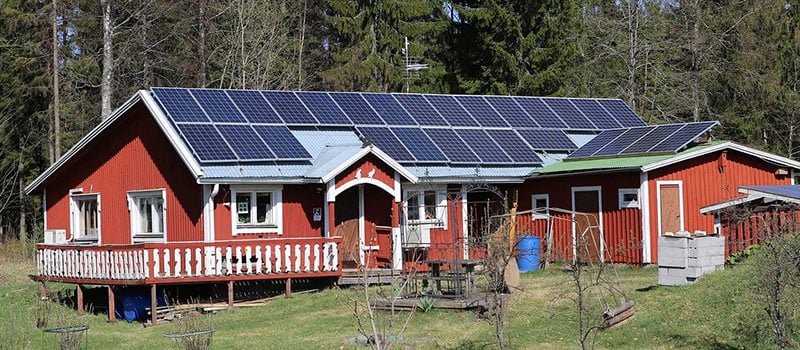You can size your solar panel array in just two easy steps! (Well, okay, there’s a little research involved, too.)
To estimate the size of your solar array, you’ll need to know:
- The number of Watt-hours (Wh) you plan to produce in one day.
- The insolation value at your location.
Watt-Hours
A Watt-hour is a measure of energy. Identifying your Watt-hours goal is the most crucial part of accurately estimating how big a system – or we might say, how many Watts of solar panel generating capacity – you will need. If you plan to tie your solar array directly to the utility grid to offset your costs, start by looking at your electric utility bill for the kilowatt-hours (abbreviated “kWh”) you use in one month. Since your electricity usage probably changes throughout the year, you might want to calculate your average monthly usage from the historical information found on most bills these days. People often choose to offset a certain portion of their average electricity usage based on their budget.
If, however, you will not be connected to the utility grid and you will in fact be producing all your own electricity, the Watt-hours or kWh number becomes even more important. For any off-grid cabin, home, office or project, we strongly recommend completing a detailed Loads List using our Loads Calculator. If you have the patience to live off-grid, then you definitely have the patience to complete a loads list! If you don’t know how many Watt-hours you are trying to produce, stop here! Do not pass Go! There is very little estimating you can do without that basic building block.
Insolation
Insolation is a funny word for the number of hours in a day that a solar panel will produce its rated voltage. While all the day’s sunshine counts toward this total, not just the brightest hours, not every daytime hour counts equally. When the sun is low in the sky, a solar panel facing it doesn’t produce as much energy as it would at noon. Another way of putting it would be to say that if you crammed all the day’s sunlight – weak and strong – into equivalent hours of “peak” sunlight, you’d have the “sun hours”, or insolation, number. In your area, while the sun may be up for 10 hours during a February day, not all that light is strong enough to be counted at full value, so the insolation value in your area may be closer to 2 sun hours. In our calculations, we use average insolation values taken from years of data collection. Insolation varies by location as well as by month. If you’re planning a year-round solar electric system, the annual average insolation value will give you a good starting point for your estimate. If you only plan to use the array seasonally, then use the insolation values for those months only. Insolation tables can be found on the internet, in books, and on our website:
- Worldwide map of insolation and PV potential
- USA map of insolation and PV potential
- List of solar insolation data for U.S. cities
- Mexico, Caribbean, and Central America map of insolation and PV potential
- South America map of insolation and PV potential
Calculations
We are trying to obtain the number of Watts, in solar panels, we need to produce a given amount of Watt-hours (or kWh) for our project in our location.
| Step 1: | Take the number of Watt-hours (or kWh) you want to produce in one day and divide it by the insolation value, in hours. |
|
| Step 2: | Allow for the normal energy losses and inefficiencies in a solar electric system. Do this by increasing the number of Watts (or kilowatts) you found in Step 1 by 30%. |
|
Now you know you can look for a 2.6 kW (or 2,600 Watt) system in order to produce, on average, 8 kWh per day (240 kWh per month) in our example location with its average of 4 hours of insolation. Expect an installed cost of approximately $4-$5* per Watt; this system would cost about $11,000 – $13,000 installed.
* Costs vary by region and site.



